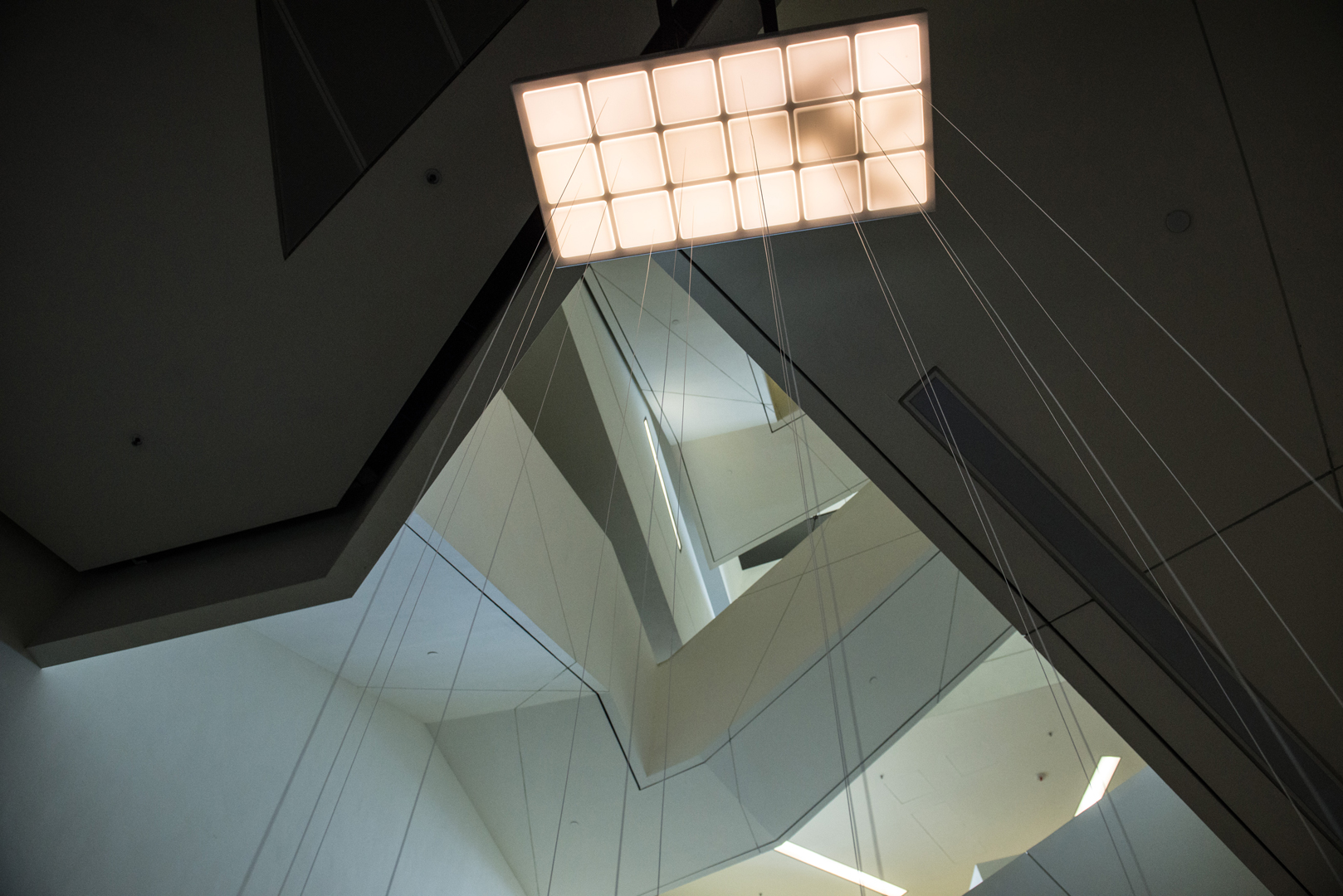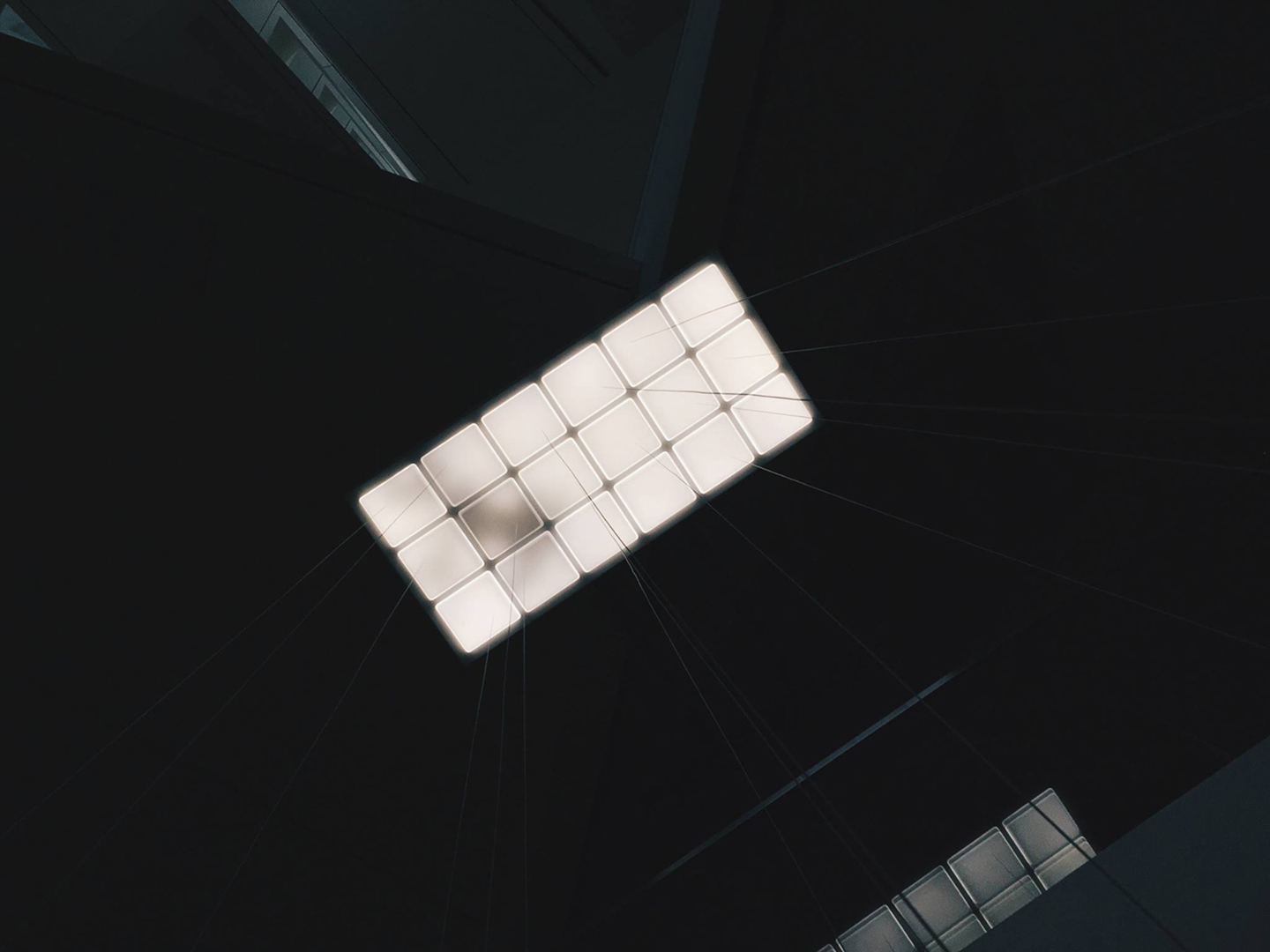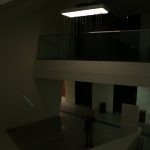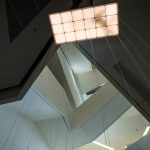“Hiatus” by Sandra Heinz
Title:
- Hiatus
Artist(s) and People Involved:
Exhibiting Artist(s):
Symposium:
Venue(s):
Creation Year:
- 2015
Medium:
- Light, microcontroller, supply, switches, PMMA, MDF, glass, misprints
Artist Statement:
Hiatus [gap, break, void] is an installation where every visitors actuation reveals a dark patch in the light field of a light object that is otherwise appearing clean and functional. The light object is installed at the ceiling where 16 pull cords in various lengths and positions are applied to 18 identical shades which are positioned in a white grid gadget. The outgoing light is warm-white tempered, which is in general associated with comfortable impressions. That impression is irritated by a cold manufactory-like design and by the malfunctioning of the light performance, which becomes a constant part of the room situation. The dark patch vanishes for a moment but then it returns falteringly in a different shape each time a pull cord is actuated. The programmed gaps in the matrix are activated randomly by pull switches. The pull cords are adjusted according to the spatial conditions so that some of them touch the ground, some are too short to do so and one is of excessive length. A leading motive of the setup of the room installation are the several recurring forms discovered in the pull cords, the cones that complete them, the shades, the framed misprints and the diverging dark patches.
Commonly, hiatus describes a short pause in which nothing happens or a space where something is missing. On the other side I understand it as a reference to the state of in-between. For the setup of the room installation I chose different recurring forms and I used a set of rules to create a clean and functional impression which should be questioned and contradicted by a scattering and faltering nonfunctional light performance and by the soothing variety of pull cords. The answer to an unambiguous signal, evoked by the use of pull switches, triggers a diffuse and edge transcending reaction of the light. The outcome of the performative human-object-interaction can be read as a dusty answer or open up room for reflections. The framed pictures of reproduced misprints are taken from daily work life. The diffuseness and the malfunction of the light object are a kind of disrupting „noise“, just like the misprints are a product of noise, too. That correlates to the noise that is attributed to signals in modern communication technologies. It is in fact an attribute of life itself. Malfunctions or noise can be disturbing or empowering, they can take a stand against unambiguity. The installation was built in an old customhouse and asks for the sense and senselessness of daily human actions.








